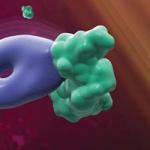
Research Topics
One of the major obstacles to effectively treating central nervous system (CNS) tumors is the integrity of the blood-brain barrier (BBB). The BBB prevents systemic drug delivery from reaching the brain and brain tumor tissue. While previous studies have mainly focused on circumventing the BBB, very few agents or mechanisms have been explored that modulate the tumor microenvironment to enhance effective therapies for malignant brain tumors. Our studies focus on understanding the heterogeneity of BBB permeability amongst malignant tumor cells and the role of the supportive BBB in tumor growth. Our collaborative laboratory and clinical investigations center around BBB biology, cancer biology, pharmacokinetics and pharmacodynamics related to optimal CNS drug delivery.
Biography
Dr. Sadhana Jackson attended Hampton University where she received her Bachelor of Science in Molecular Biology. She then obtained her MD from Eastern Virginia Medical School (EVMS) and subsequently completed a residency in Pediatrics at Orlando Health. After completing a fellowship in pediatric hematology/oncology at St. Jude Children’s Research Hospital, she finished her training at Johns Hopkins for a joint fellowship in pediatric neuro-oncology and clinical pharmacology.
Dr. Sadhana Jackson is a board-certified pediatrician and pediatric hematologist/oncologist with clinical expertise and research efforts related to the blood-brain barrier and malignant glioma. Her clinical practice focuses on drug delivery of systemic agents for pediatric malignant brain tumor patients. As a tenure-track Investigator in NINDS and NCI, Dr. Jackson ties her clinical practice to her research efforts focused on understanding the heterogeneous permeability of the blood-brain barrier amongst malignant gliomas. With her laboratory and clinical studies, her team aims to modulate the tumor microenvironment to enhance effective treatments to the CNS for malignant gliomas. She has extensive experience with use of intracerebral microdialysis to evaluate optimal drug entry to malignant tumors. Using exquisite tools to measure drug concentrations and agents to transiently disrupt the BBB, her research aims to maximize therapies for prolonged survival in aggressive pediatric brain tumors.
Selected Publications
- Vézina A, Manglani M, Morris D, Foster B, McCord M, Song H, Zhang M, Davis D, Zhang W, Bills J, Nagashima K, Shankarappa P, Kindrick J, Walbridge S, Peer CJ, Figg WD, Gilbert MR, McGavern DB, Muldoon LL, Jackson S. Adenosine A2A Receptor Activation Enhances Blood-Tumor Barrier Permeability in a Rodent Glioma Model. Mol Cancer Res. 2021;19(12):2081-2095.
- Jackson S, Anders NM, Mangraviti A, Wanjiku TM, Sankey EW, Liu A, Brem H, Tyler B, Rudek MA, Grossman SA. The effect of regadenoson-induced transient disruption of the blood-brain barrier on temozolomide delivery to normal rat brain. J Neurooncol. 2016;126(3):433-9.
- Lim S, Kwak M, Kang J, Cesaire M, Tang K, Robey RW, Frye WJE, Karim B, Butcher D, Lizak MJ, Dalmage M, Foster B, Nuechterlein N, Eberhart C, Cimino PJ, Gottesman MM, Jackson S. Ibrutinib disrupts blood-tumor barrier integrity and prolongs survival in rodent glioma model. Acta Neuropathol Commun. 2024;12(1):56.
- Dalmage MR, Nwankwo A, Sur H, Nduom E, Jackson S. A scoping review of pediatric microdialysis: A missed opportunity for microdialysis in the pediatric neuro-oncology setting. Neurooncol Adv. 2022;4(1):vdac171.
- Jackson S, Patay Z, Howarth R, Pai Panandiker AS, Onar-Thomas A, Gajjar A, Broniscer A. Clinico-radiologic characteristics of long-term survivors of diffuse intrinsic pontine glioma. J Neurooncol. 2013;114(3):339-44.
Related Scientific Focus Areas
This page was last updated on Monday, August 26, 2024



